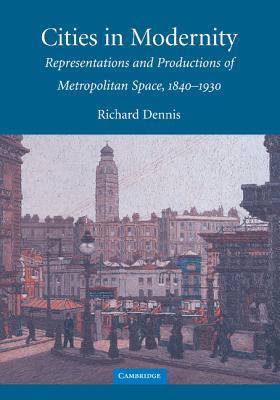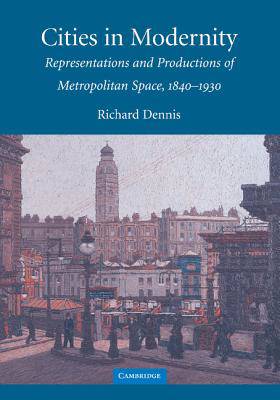
Je cadeautjes zeker op tijd in huis hebben voor de feestdagen? Kom langs in onze winkels en vind het perfecte geschenk!
- Afhalen na 1 uur in een winkel met voorraad
- Gratis thuislevering in België vanaf € 30
- Ruim aanbod met 7 miljoen producten
Je cadeautjes zeker op tijd in huis hebben voor de feestdagen? Kom langs in onze winkels en vind het perfecte geschenk!
- Afhalen na 1 uur in een winkel met voorraad
- Gratis thuislevering in België vanaf € 30
- Ruim aanbod met 7 miljoen producten
Zoeken
€ 76,45
+ 152 punten
Uitvoering
Omschrijving
What made cities 'modern' in the nineteenth and early twentieth centuries? Cities in Modernity explores connections between culture, economy and built environment in cities of this period, drawing its evidence principally from London, New York and Toronto. The book discusses both the cultural experience of modernity and the material modernization of cities, placing special emphasis on their historical geographies, on the production, representation and use of urban space. The opening chapters present new ways of seeing cities in political and religious discourse, social survey, mapping, art and literature. The book then concentrates on new kinds of public and private spaces, such as apartment buildings, office blocks and department stores, and the networks of communication between them. An important theme throughout is the gendered experience of the new types of environment. The book will appeal to scholars and students of historical geography, urban history and cultural studies.
Specificaties
Betrokkenen
- Auteur(s):
- Uitgeverij:
Inhoud
- Aantal bladzijden:
- 458
- Taal:
- Engels
- Reeks:
- Reeksnummer:
- nr. 40
Eigenschappen
- Productcode (EAN):
- 9780521468411
- Verschijningsdatum:
- 28/04/2008
- Uitvoering:
- Paperback
- Formaat:
- Trade paperback (VS)
- Afmetingen:
- 175 mm x 251 mm
- Gewicht:
- 907 g

Alleen bij Standaard Boekhandel
+ 152 punten op je klantenkaart van Standaard Boekhandel
Beoordelingen
We publiceren alleen reviews die voldoen aan de voorwaarden voor reviews. Bekijk onze voorwaarden voor reviews.









